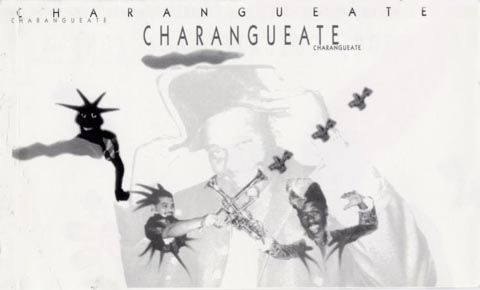Indice - Table of contents
Lo Nuevo[hide]
Musicos: Rafael Paseiro Monzón
Musicos: Dennis Nicles Cobas
Musicos: Jiovanni Cofiño Sánchez
Musicos: Yasser Morejón Pino
Fotos: Tom Ehrlich : 2024 Monterey Jazz, P...
Resenas: Vacilón Santiaguero (Circle 9 ...
Staff: Bill Tilford
Fotos: Tom Ehrlich : 2024 Monterey Jazz, P...
Fotos: Tom Ehrlich : 2024 Monterey Jazz Fe...
Fotos: Tom Ehrlich : testing 123
Grupos: Pupy y los que S... : Discography - 1995- F...
Reportes: From The St... : Cubadisco 2...
Reportes: From The St... : Jazz Plaza ...
Fotos: Tom Ehrlich : Irakere 50th Annivers...
Fotos Del Día [hide]
SpanishEnglishThe Songs: Track by Track - 3. Charanguéate

Charanguéate (Manolín «El Médico de la Salsa») [aquí para la letra]
Charanguéate es la cuarta y última canción que compone Manolín para la Charanga Habanera. Las primeras tres composiciones las habría realizado antes de formar su propia orquesta, pero «Charanguéate» es un ejemplar que «El Médico» completa cuando ya es suceso musical del momento en Cuba. Es uno de los tres famosos «temas de presentación» que han sido prestados a grupos de timba por personajes legendarios de otras bandas . Los otros dos son «Lo que quiero es Bamboleo» de Giraldo Piloto y «Somos la Charanga» de Juan Formell, otorgado a este mismo conjunto base de la CH al separarse de David Calzado y mudar de nombre a «Charanga Forever».
Si bien la Charanga Habanera no había alterado su nómina de músicos y arreglistas desde su primer disco, su estilo había cambiado tan drásticamente que el inicio de «Charanguéate» es el único momento en «Tremendo Delirio» que concebiblemente podría aparecer en «Me sube la fiebre» o «Hey You Loca». Las primeras cinco notas del piano resuscitan el alegre sol natural y la onda 3:2 que carburaban los clásicos de antaño. [ejemplo de audio 9] También es uno de esos raros momentos de la clave del 3:2 en un disco predominantemente afincado al 2:3. Para salvaguardar la paciencia de aquéllos de ustedes que no son músicos, hemos apartado un análisis de la clave a una página distinta, a la cual puedes acudir orpimiendo aquí. Basta con decir que aun cuando la mayoría de los temas del disco utilizan el 2:3, «Charanguéate» cuenta con una estructura de clave muy interesante y peculiar.
La composición del arreglo también es bastante distinta a la de la típica estructura timbera (si hay tal cosa). Es común empezar un tema de timba con un pequeño anticipo de la sección de montuno como introducción a la típica sección inicial de metales y el cuerpo que generalmente abren los arreglos de salsa. Y eso es lo que aparentemente está sucediendo aquí. El coro abridor, (véase ejemplo de audio 9), es seguido de una sección melódica que nos suena a un cuerpo. Pero inmediatamente luego de eso, nos sorprenden nuevamente la introducción y la primera parte, y parece que todo lo que venimos escuchando es el cuerpo de la canción. [ejemplo de audio10]. Entonces todo se disuelve en un evidente motivo de metales introductorios, característico de una salsa romántica, seguido por un trato más corriente y salsera de la parte intermedia de la introducción, y es aquí cuando por fin nos aseguramos de que esa sección era, se podría decir, el cuerpo del tema [ejemplo de audio 11]. Esto nos lleva al coro introductorio, como lo vaticinamos al inicio, pero con la clave invertida y un tumbao totalmente distinto. [ejemplo de audio 12] El tumbao inicial no se repite más. Por lo cual, a fin de cuentas, nos topamos con una estructura corriente, precedida por una sola sección que dura un minuto veinte y que toma el material melódico del segmento principal, dotándole, sin embargo, de un tratamiento musical totalmente novedoso.
El primer mambo es un buen ejemplo del contraste evidente entre este disco y el trabajo anterior. El mambo se introduce con su estilo de antaño, el piano imponiéndose ante la mezcla y llenando los huecos con figuras del blues y el jazz. Pero en el breve lapso de dos tiempos repentinos y dramáticos, el tema entero se va por la tangente, modulando al modo menor, similar a las demás canciones de «Tremendo Delirio» [ejemplo de audio 13]





















